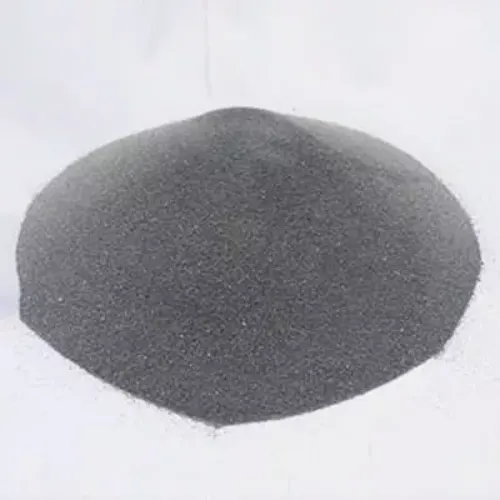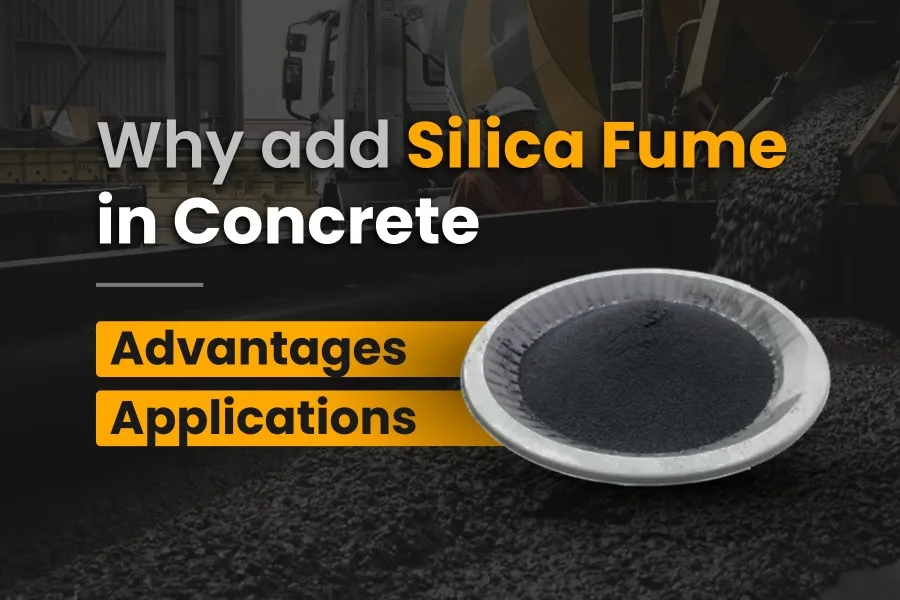Concrete is already one of the most popular building materials in construction. But while regular concrete may suffice when it comes to strength, resistance to the elements, and durability, when we want to build strength, durability, and resistance to the elements, plain old concrete may not be enough.
This is where silica fume in concrete comes in. Silica fume is a revolutionary material that has radically changed how we plan and build structures that will last.
Table of Contents
What Is Silica Fume?
Silica fume, or micro silica, is a byproduct of producing silicon metal or ferrosilicon alloys. Silica fume is made up of incredibly fine spherical particles of silicon dioxide.
The particle size of silica fume particles is about 100 times smaller than that of cement particles, which allows the silica fume to fit into the smallest voids in the concrete mix.
This ultra-fine aspect is what makes silica fume so powerful. When silica fume is added to concrete, the silica fume does not just take up space; it reacts with the calcium hydroxide produced during the hydration of the cement.
This reaction helps create more calcium silicate hydrate, the material that provides strength to concrete. A stronger concrete matrix becomes denser and much more durable.
Due to these attributes, silica fume in concrete has become a preferred choice for projects where strength, durability are required.
Whether it’s bridges, tunnels, high-rise buildings, or marine structures, this additive has earned its place as a reliable and effective solution, and lifespan is critical.

How Silica Fume Works Inside Concrete?
There are two key enhancements silica fume adds to a concrete mix:
• The Physical Filling Effect – Because the particles of silica fume are so fine, they fill the microscopic voids between cement particles, allowing the bond to be tighter, and they limit the porosity of the concrete.
• The Pozzolanic Reaction – Silica fume reacts with the calcium hydroxide by-product from the initial setting of the concrete, making additional cementitious compounds that continue to gain strength and durability over time.
So, these two contributions lead to a more robust performance in both their fresh state and hardened state. Furthermore, it can be noted that many high-performance concrete mixes require silica fume in order to be high-performance.
Benefits of Using Silica Fume in Concrete
So why do engineers and contractors come to depend on this mystical mineral?
1. Increase in Compressive Strength
Silica fume contributes to the properties of high-strength concrete because it densifies the concrete mix and reduces the number of pores. Therefore, a concrete compressive strength of much greater than 70 MPa is achievable when silica fume is used, which is critical for heavier loading structures.
2. Increase in Durability
By utilizing pozzloanic activity, but also the filling effect, silica fume benefits the durability of concrete and improves its resistance to the elements and the environment, such as freeze-thaw cycles, mechanical wear, and weathering.
3. Enhanced Workability
If mixed properly, silica fume enhances the cohesiveness of the mix and reduces the chances of segregation and bleeding.
This results in better workability and easier handling on site.
4. Minimizes Permeability
With less permeability, there’s less chance that water and harmful chemicals can permeate the concrete. This is of particular importance in water retention structures like tanks and in structures like bridges, marine structures, or other applications where moisture ingress in the concrete will be a problem.
5. Sulphate & ASR Resistance
Silica Fume improves resistance to sulphate attack and alkali-silica reaction ASR, both of which have the potential to deteriorate standard concrete.
6. Environmentally-Friendly Option
Silica fume is a byproduct of an industrial process, and therefore, it helps reduce waste and reduces the overall carbon footprint in construction.
7. Smooth Surface Finish
The fine particle size produces a smoother and more consistent concrete surface, no more so than in exposed concrete finishes.
8. Faster Early Strength Development
Increasingly higher early strength makes silica fume a good option for, say, a fast-track project or early form removal.
9. Improved Cohesion, less segregation
Silica fume increases the bond between the concrete matrix and the concrete components, resulting in less potential for segregation and contributing to the quality and consistency of the concrete mix.
10. Increased Chemical Resistance
Concrete produced with silica fume can withstand aggressive chemical attack; therefore, it can be used for industrial floors, chemical plants, and wastewater treatment facilities.
11. Thinner Sections Possible
With increased strength and low permeability, designers can construct thinner elements without sacrificing the strength of the structural element.
12. Abrasion and Erosion Resistance
Concrete made with silica fume is very resistant to abrasion and erosion. Examples include:
– Factory floors
– Dams
– Highways
13. Resistance to chloride ion penetration
This is important for structures that will be exposed to seawater or to de-icing salts on roads and bridges. Silica fume concrete can eliminate chloride penetration and protect the embedded steel from corrosion.
14. Improved resistance to carbonation
It is also important to protect against carbonation, which can minimize the life of reinforced concrete by affecting the steel inside the concrete.
15. High electrical resistivity
In addition to these benefits, the fine powder has a very dense matrix, which lowers the mobility of ions and increases electrical resistivity. This helps decrease the risk of corrosion in steel-reinforced structures.
16. Minimizing alkali-aggregate reaction
Silica fume allows for the free alkali content in the mix to be reduced, thereby reducing the risk of the long-term deterioration of concrete from alkali-aggregate reaction.
17. Reduces drying shrinkage
Silica fume can help limit drying shrinkage of the concrete, as well, to reduce cracking during the curing and hardening process, which may lead to potential liability.
Where Silica Fume Could Be Used in Concrete?
When an outstanding performance is required, there will be a wide range of applications where silica fume will be used, such as:
High-rise buildings: will allow higher loads to be supported while decreasing the weight of the structural element.
Bridges and Flyovers: Enhance load-bearing ability and improve resistance to chloride attack.
Marine Structures: Provides resistance to saltwater corrosion.
Industrial Floors and Warehouses: Increases wear and abrasion resistance.
Tunnels/Dams: Increases strength and impermeability under high pressure.
Water Tanks/Sewage Treatment Plants: Resists attack from chemicals and moisture.
Precast Elements: Increased strength and finish for precast products.
Silica fume provides significant advantages for concrete in a less durable condition under exposure to aggressive chemicals, moisture, or high mechanical loading. It is also especially useful for long-lifespan structures where minimal maintenance is appropriate over decades.

About Sakshi Chem Sciences
Sakshi Chem Sciences strives to present high-quality construction solutions to suit global performance requirements. Our silica fume products are according to a number of international norms, such as EN 13263 and the ASTM C1240, to provide consistency and reliability of reactivity for each batch you use.
Sakshi Chem Sciences has a proven history of supporting some of the world’s most iconic infrastructure projects over 30 years. We support concrete application for highways, skyscrapers, ports and plants, and providing the silica fume to build concrete structures that are better, stronger, and will last longer.
Sakshi Chem Sciences assures quality, innovation, and trust for contractors, architects, and engineers when they choose us.
Conclusion
Silica fume in concrete is more than an additive – it’s a performance enhancer that offers strength, durability, and longevity. If you’re doing a minor residential pour or just finished a major infrastructure job, micro silica can be a real game changer.
If you want a concrete mix that lasts longer, performs better, and resists the elements, silica fume is the way to go.
So the next time you’re putting together your concrete mix, keep it simple, and just think a little bit beyond the ordinary and basics. Think micro silica! Think performance! Think Sakshi Chem Sciences.
Sagar Telrandhe is a Construction Engineer with a B.Tech in Construction Engineering & Management. Passionate about infrastructure development, project planning, and sustainable construction, he specializes in modern construction techniques, project execution, and quality management, contributing to efficient and innovative building.


